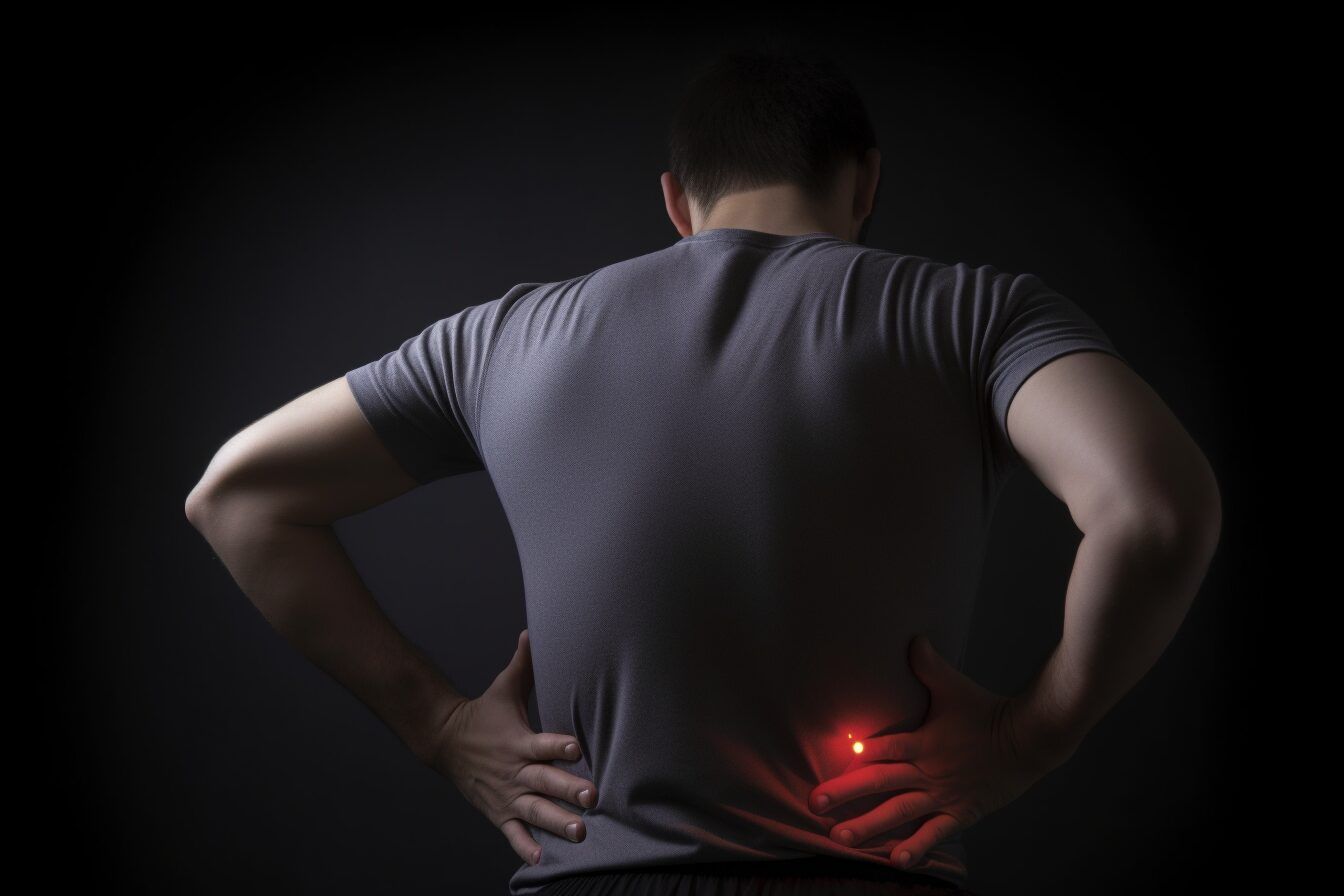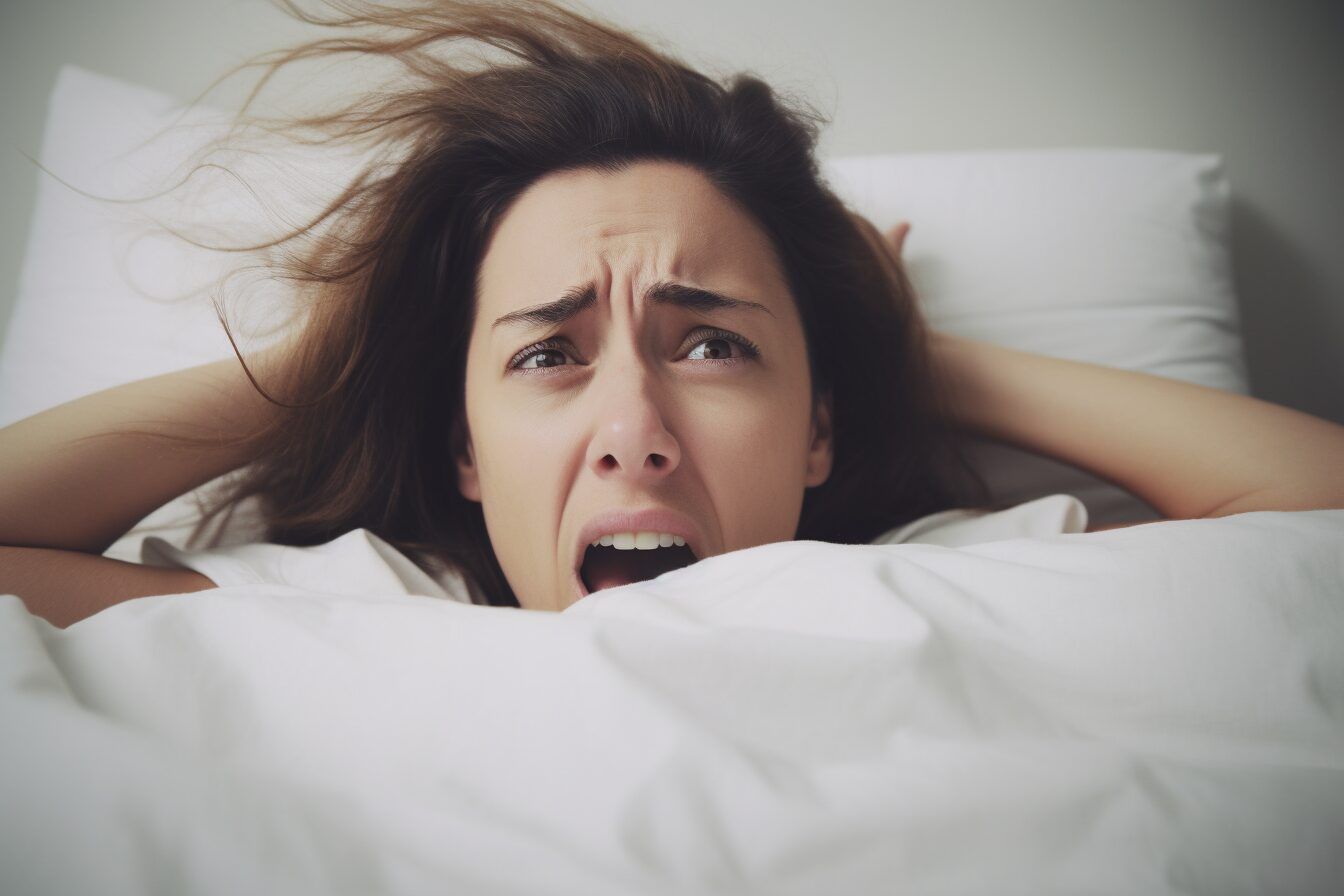Find Your Best Position to Sleep for Lower Back Pain Relief
Finding the best position to sleep for lower back pain is like unlocking a secret level in a game, where the reward is waking up feeling refreshed and without discomfort. Many of us wrestle with our pillows and mattresses nightly, trying to find that sweet spot that doesn't leave our backs screaming by morning. This post dives deep into how your sleeping position can significantly impact your spinal health and overall well-being.
Let's guide you through positions backed by science that are proven to lessen back discomfort, guaranteeing a night of restful sleep consistently. From lying flat on your back with support under your knees to side sleeping with a pillow between them; we cover all bases for achieving optimal spine alignment while snoozing. Additionally, we offer practical tips on choosing the right mattress and pillow—because yes, these play crucial roles too.
So let's say goodbye to those restless nights spent tossing and turning due to back pain. A better night's sleep isn't just possible; it's within reach.
Table Of Contents:
- Understanding Lower Back Pain and Sleep Positions
- Best Sleeping Positions for Lower Back Pain Relief
- Choosing the Right Pillow and Mattress for Lower Back Support
- Special Considerations for Pregnant Women with Lower Back Pain
- Maintaining a Healthy Lifestyle to Improve Sleep Quality and Reduce Back Pain
- Sleeping Positions to Avoid if You Have Lower Back Pain
- FAQs in Relation to Best Position to Sleep for Lower Back Pain
- Conclusion
Understanding Lower Back Pain and Sleep Positions


Finding the sweet spot between a good night's sleep and waking up without lower back pain can feel like a quest for the Holy Grail. But it's not as elusive as you might think. Grasping the essence of how your slumber posture affects spinal alignment unveils a crucial strategy for mitigating or even sidestepping discomfort in the lower back.
The Role of Spinal Alignment in Sleep
Maintaining a neutral spine during those precious hours of shut-eye is crucial to alleviate lower back discomfort. Think of your spine as the backbone of comfort (pun intended). When it's properly aligned, pressure on spinal discs is minimized, reducing muscle strain and allowing tissues to recover overnight. This ideal scenario supports why lying flat on your back with proper support under your knees helps maintain this optimal alignment.
However, not all positions are created equal when it comes to supporting spinal health. For instance, "Position Yourself for Sound Sleep and Back Pain Relief," suggests that adding a small pillow or rolled towel under the small of your back can further enhance this natural curve if you're set on catching Zs while staring at the ceiling.
The Impact of Poor Sleep Posture
Snoozing in less-than-ideal postures doesn't just rob you of feeling rested—it contributes directly to chronic pain issues by placing unnecessary strain on muscles and ligaments around the lumbar region. Stomach sleeping ranks high among culprits due to its knack for twisting necks out-of-whack and arching backs into painful bows over time.
To counteract these pitfalls, choose supportive mattresses that foster rather than fight against our body’s need for neutral posture through night-long journeys across dreamland.
Key Takeaway:
Finding relief from lower back pain might seem tough, but it's all about the right sleep position. Keep your spine happy by laying flat with support under your knees or a small pillow for that perfect curve. Say no to stomach sleeping—it's a fast track to more pain.



Subscribe To Dr Mike's MVP Newsletter!
Exclusive content, interesting topics, real insights.



Best Sleeping Positions for Lower Back Pain Relief
Lying Flat on Your Back
If you've ever thought your mattress was just a comfy place to crash, think again. Lying flat on your back is not only ideal for catching Z's but also does wonders for your spine. Assuming the posture that keeps your spine in perfect harmony, especially when battling an aggravating condition such as a herniated disc, is fundamental.
But don't just take my word for it; experts agree that lying flat helps distribute weight evenly across the body's largest surface area, reducing strain and allowing muscles and ligaments to relax more fully. Folks in the know often hail it as the supreme way to catch some Z's.
Side Sleeping with a Pillow Between Knees
Now, if lying flat on your back sounds about as appealing as watching paint dry, side sleeping might be more up your alley – especially with a pillow between those knees. This isn’t just about hogging all the pillows; placing one between your knees helps maintain natural spinal curvature and takes the pressure off that lumbar region.
This technique reduces stress on hips and lower back while improving blood circulation - key factors when aiming for pain-free sleep after long days or strenuous workouts. And hey, who wouldn't want to wake up feeling like they've actually slept instead of participating in an overnight wrestling match?
The magic doesn't stop there; adding a medium-firm mattress into the mix can transform good sleep posture into great sleep posture by providing additional support where it counts most: beneath you. Remember, proper alignment during rest is essential, not just for alleviating discomfort but also for preventing future issues from creeping up uninvited.
Choosing the Right Pillow and Mattress for Lower Back Support


If you're struggling with lower back pain, a critical step towards relief is ensuring your sleeping environment supports your spine. At HB Chiropractic in Huntington Beach, CA, we understand how vital a good night's sleep is to not only alleviate back pain but also to maintain overall health. Let’s dive into how selecting the right pillow and mattress can transform your sleep experience.
Finding the Right Pillow
The key to picking the perfect pillow lies in its ability to align your neck with the rest of your spine. For side sleepers, a thicker pillow helps fill the gap between their head and shoulders. Meanwhile, back sleepers might benefit from a thinner option that prevents excessive tilting of their head forward or backward. Memory foam pillows are particularly beneficial as they mold according to individual body shapes providing tailored support. Remember, keeping your spine aligned throughout the night can significantly reduce morning stiffness and discomfort.
Finding The Right Mattress
Your mattress plays an equally crucial role in managing lower back pain; it should neither be too soft nor too hard. A medium-firm mattress often provides optimal support by distributing weight evenly across pressure points while contouring slightly around natural curves without causing sagging. Testing out different mattresses before making a purchase decision could help you find one that suits both comfort preferences and spinal health needs.
Finding The Right Accessories To Sleep With
- Knee Pillows: Placing a pillow between or underneath knees when lying down can help keep hips square thus maintaining spinal alignment – especially helpful for side and stomach sleepers respectively.
- Lumbar Supports: Adding lumbar support beneath lower backs (or using specialized cushions) may assist those who prefer sleeping on their backs by filling any gaps between them & bed surface thereby preventing strain caused due overextension.
- Mattress Toppers: If changing an entire mattress isn’t feasible immediately - consider adding memory foam tops which offer additional cushioning & adaptability helping relieve stress off sensitive areas like hips & shoulders contributing towards better posture during slumber periods.
Sleep plays an indispensable part in healing and rejuvenation processes within our bodies - don't let inadequate bedding stand way! Taking time to invest in properly fitted accessories designed specifically to cater to unique requirements, posed by individuals suffering from chronic pains, can improve quality of life!
Contact us at HB Chiropractic if you’re seeking professional guidance on alleviating lower back pain through chiropractic care tailored just for you here locally in Huntington Beach, CA!
Special Considerations for Pregnant Women with Lower Back Pain
Navigating the quest for a restful night's sleep becomes increasingly complex for expectant mothers, as they must balance the discomfort of lower back pain with securing a position that doesn't aggravate it further. As the belly grows, so does the strain on the spine.
A National Institute of Neurological Disorders and Stroke fact sheet highlights how crucial proper support is during sleep to manage and alleviate discomfort in the lower back. One effective solution? A body pillow. For expectant mothers grappling with discomfort during the night, this implementation could revolutionize their sleep experience.
Sleeping on your side with a body pillow tucked between your knees helps maintain spinal alignment by distributing weight evenly across your hips and pelvis. This setup reduces pressure on the lumbar region, offering much-needed comfort throughout the night.
Another point worth mentioning is room temperature—keeping it cool might not directly impact lower back pain but plays an essential role in achieving quality sleep. Lowering the thermostat can enhance slumber's quality, crucial as insufficient rest may exacerbate ongoing discomforts, such as those stemming from adjustments in stance due to pregnancy.
Incorporating gentle stretching exercises before bed can also help reduce muscle strain associated with carrying extra weight during pregnancy. By performing these stretches, you're essentially boosting the flow of blood and mitigating stress in critical spots often plagued by discomfort, such as the lumbar region, cervical area, and deltoids.
Finding ways to achieve comfortable and restorative sleep while managing lower back pain requires patience and experimentation with different strategies tailored specifically towards pregnant women's needs—for many expecting mothers; using a body pillow provides significant relief from discomfort allowing them better nights of peaceful slumber without compromising their safety or that of their unborn child's health.
Maintaining a Healthy Lifestyle to Improve Sleep Quality and Reduce Back Pain
We often overlook how our daytime activities play into nighttime discomforts. A sedentary lifestyle is no friend to our backs, so integrating gentle stretching exercises into our routine could do wonders. Coupled with staying hydrated throughout the day, these habits work towards reducing muscle strain—ultimately leading us towards achieving that elusive pain-free sleep we dream about (pun intended).
A good night's sleep is like gold dust for those battling lower back pain. But, did you know that tossing and turning isn't the only culprit behind your restless nights?
Not moving much, slouching, and munching on unhealthy snacks might also play big roles in the saga of your sleepless nights. Let's break down how tweaking these areas of your life could lead you to dreamland more smoothly.
The Role of Exercise in Alleviating Back Pain
Working out does more than just help you drop pounds or keep in shape; it's pivotal for easing that nagging ache in your back. Gentle stretching exercises before bed can loosen up tight muscles, making it easier for you to find a comfortable sleep position without straining your back. Additionally, weaving muscle-building exercises into your daily schedule fortifies the support system for correct spinal posture by beefing up the surrounding musculature. If the idea of hitting the gym sounds daunting, start small with daily walks or yoga sessions at home.
If you're looking for specific exercises tailored to alleviate discomfort from conditions like herniated discs or chronic pain, consulting professionals who understand spinal health is key.
Nutrition’s Impact on Your Spinal Health
Eating right doesn’t just trim inches off your waistline; it has profound effects on spinal health too. Foods rich in anti-inflammatory properties can reduce swelling around sensitive areas in your spine leading to less pain throughout the day and night. Incorporating omega-3 fatty acids found in fish oil supplements or flaxseeds may also help lessen morning stiffness often experienced by those suffering from lower back issues.
Daily Habits That Promote Restful Nights
Last but not least are daily habits that pave the way towards better sleep quality beyond what exercise and diet alone can achieve. Maintaining room temperature conducive to restful slumber is one easy fix—neither too hot nor too cold should do the trick nicely. Additionally ensuring mattress pillow choices provide ample neck lumbar support based on individual needs makes a huge difference in achieving peaceful uninterrupted shut-eye each evening.
Key Takeaway:
Revamp your lifestyle to kiss those sleepless nights goodbye. Exercise loosens tight muscles, proper nutrition reduces inflammation, and the right daily habits lead you straight to dreamland. It's not just about finding a comfy position; it's about creating an environment where good sleep and back pain relief go hand in hand.
Sleeping Positions to Avoid if You Have Lower Back Pain


When it comes to getting a good night's sleep, not all positions are created equal, especially if you're one of the many dealing with lower back pain. Stomach sleeping is often called out as the worst position for those suffering from this common ailment.
Why? Because lying on your stomach puts unnecessary pressure on your spine, disrupting its natural curve. This can lead to muscle strain and even more discomfort when you wake up. Imagine pressing a curved object into a flat surface; over time, it wants to flatten out - that's essentially what you're doing to your spine when you sleep on your stomach.
Besides leading to poor posture throughout the day, stomach sleeping can also exacerbate conditions like herniated discs by forcing them further out of alignment. For anyone who has felt that sharp twinge in their back after waking up, know this: It might be due to how you slept rather than what you did during the day.
To protect yourself against such woes and ensure pain-free mornings, we suggest avoiding positions that place strain or add weight unevenly across your body. Instead, opt for postures supporting spinal neutrality – something like sleeping with a pillow between knees achieves quite well by maintaining natural curvature without adding stress.
The key takeaway here? If experiencing chronic back issues or just aiming for better quality rest, we suggest ditching old habits like snoozing face-down may significantly improve how comfortable and rested you feel each morning. Let’s give our backs the break they deserve by choosing smarter ways to hit hay every night.
Key Takeaway:
Ditch stomach sleeping to kiss goodbye to morning back pain. Side sleep with a pillow between your knees for better rest and a happier spine.
FAQs in Relation to Best Position to Sleep for Lower Back Pain
How should I sleep if my lower back hurts?
Lie on your side with a pillow between your knees to keep the spine straight. This eases the strain.
Is lying in bed good for lower back pain?
Too much bed rest can stiffen muscles and worsen pain. Stay active but avoid straining your back.
How do you decompress your spine while sleeping?
Sleeping flat on your back with a pillow under your knees helps decompress the spine naturally overnight.
How do I relieve pressure in my lower back?
Maintain a neutral position by placing pillows strategically, either under or between legs, to support natural curves.
Conclusion
You've learned that lying flat with knee support or side sleeping with a pillow between your knees can transform your nights.
Remember, choosing the right mattress and pillow is crucial. Bedding transcends mere sleep accessories; they serve as instruments for recuperation.
Maintain spine alignment, avoid stomach sleeping, and embrace a healthy lifestyle. These aren't suggestions; they are essentials for those seeking relief from back discomfort.
Quality sleep equals quality life. Let this guide be your first step towards restful nights and pain-free days.
18600 Main St STE 110, Huntington Beach, CA 92648



Subscribe To Dr Mike's MVP Newsletter.
Get In Touch
(714) 794-2171
Office Hours
Monday-Thursday:
7:00 am - 11:00 am, 2:00 pm - 6:00 pm
Friday: Closed
Saturday: By Appointment Only
Sunday: Closed



(714) 794-2171
Subscribe To Dr Mike's MVP Newsletter.
Office Hours
Monday-Thursday:
7:00 am - 11:00 am, 2:00 pm - 6:00 pm
Friday: Closed
Saturday: By Appointment Only
Sunday: Closed
18600 Main St STE 110, Huntington Beach, CA 92648
Huntington Beach Chiropractic | Copyright ©2024 | Website by iTech Valet
